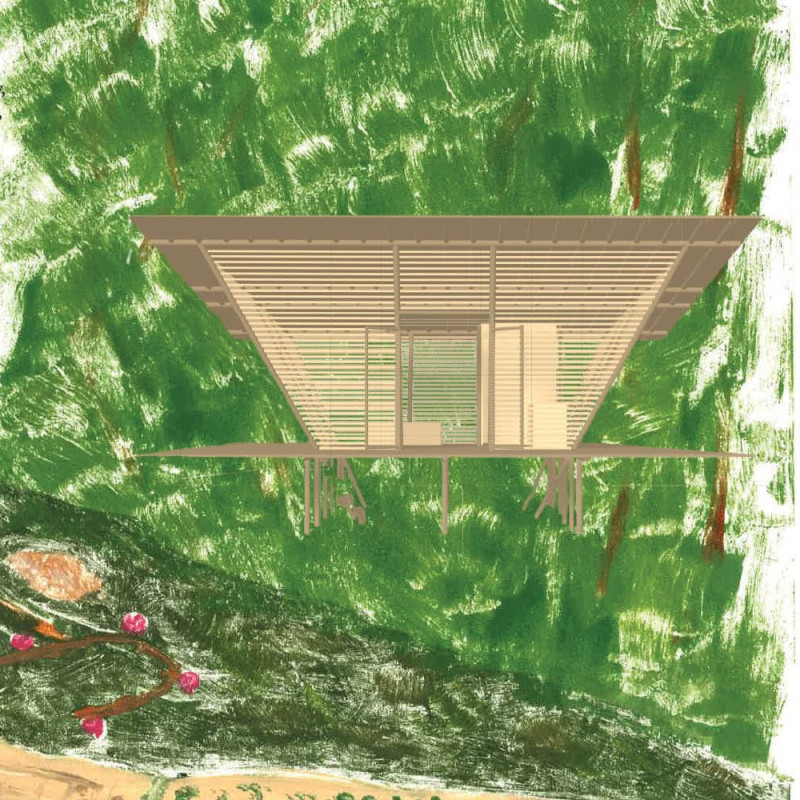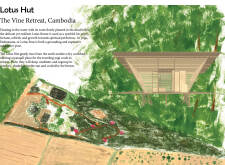5 key facts about this project
The Lotus Hut is located at The Vine Retreat in Cambodia. It serves as a quiet space for travelers and yogis seeking peace and reflection. Inspired by the Lotus flower, known for its symbolism of purity and spiritual growth, the hut integrates function with a natural setting. Its placement among a dry creekbed enhances the theme of retreat and connection to nature, inviting occupants to experience a serene environment.
Design Concept and Spatial Arrangement
The design focuses on creating an open, well-ventilated space that allows for plenty of natural light. The hut rises gently from the ground, forming a bond with its surroundings. Its symmetric shape encourages cross ventilation, improving airflow within the interior areas. This arrangement not only increases comfort but also supports a calm atmosphere conducive to meditation and relaxation.
Material Selection and Sustainability
The materials chosen for the Lotus Hut highlight a dedication to sustainability and local craftsmanship. The primary use of bamboo and bamboo products ensures that the structure is lightweight and has a low thermal mass. This characteristic helps the hut respond well to the local climate. The roof is made from corrugated metal painted white, which reflects sunlight and reduces heat absorption, contributing to the overall energy efficiency of the building.
Environmental Integration and Climate Responsiveness
The design addresses the specific challenges posed by the tropical climate. The large overhang of the roof effectively shields living spaces from harsh sunlight, promoting comfort during hotter days. Raising the hut on stilts opens the area beneath, allowing for improved airflow and natural cooling. These features not only serve practical purposes but also help the hut connect with its natural environment.
Attention to detail is evident in features such as louvered panel walls, which enhance daylight while ensuring privacy. Every aspect of the Lotus Hut is designed to create a balanced experience, encouraging occupants to embrace the tranquility that surrounds them. The result is a thoughtful retreat that resonates with both its symbolic meanings and practical functions.





















































